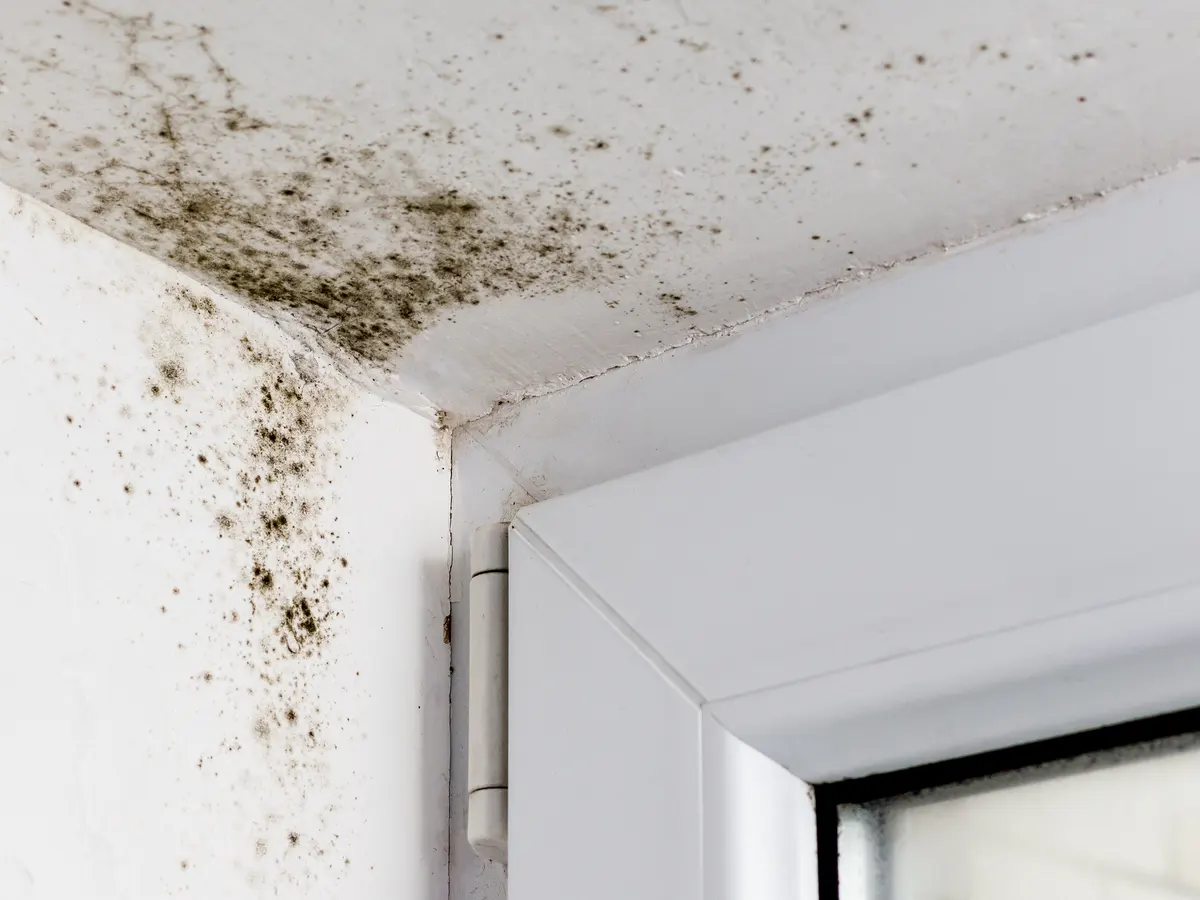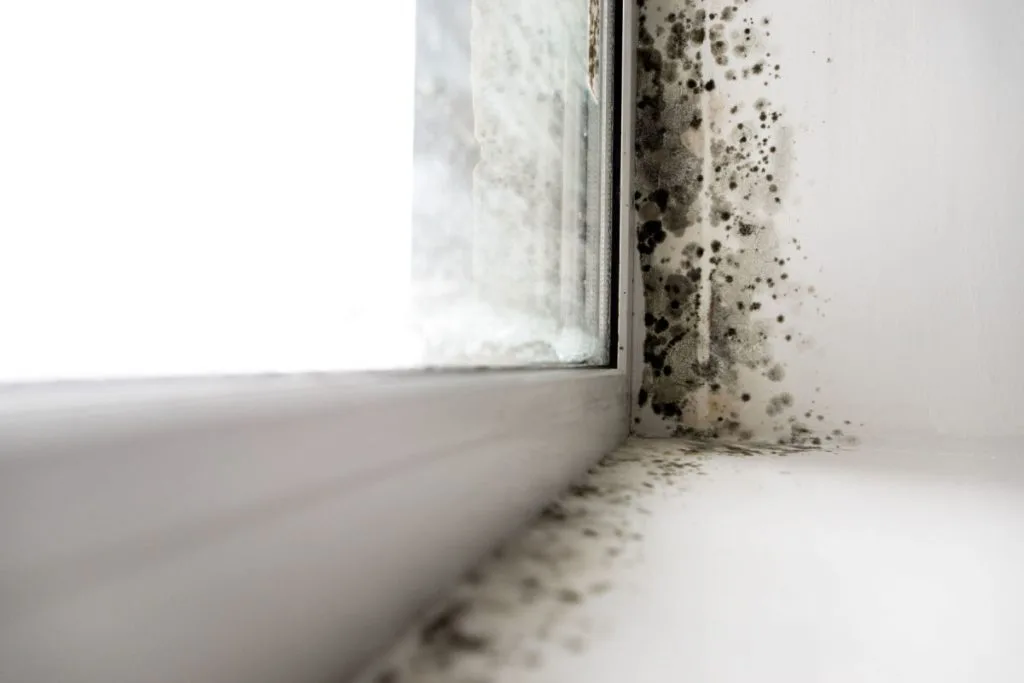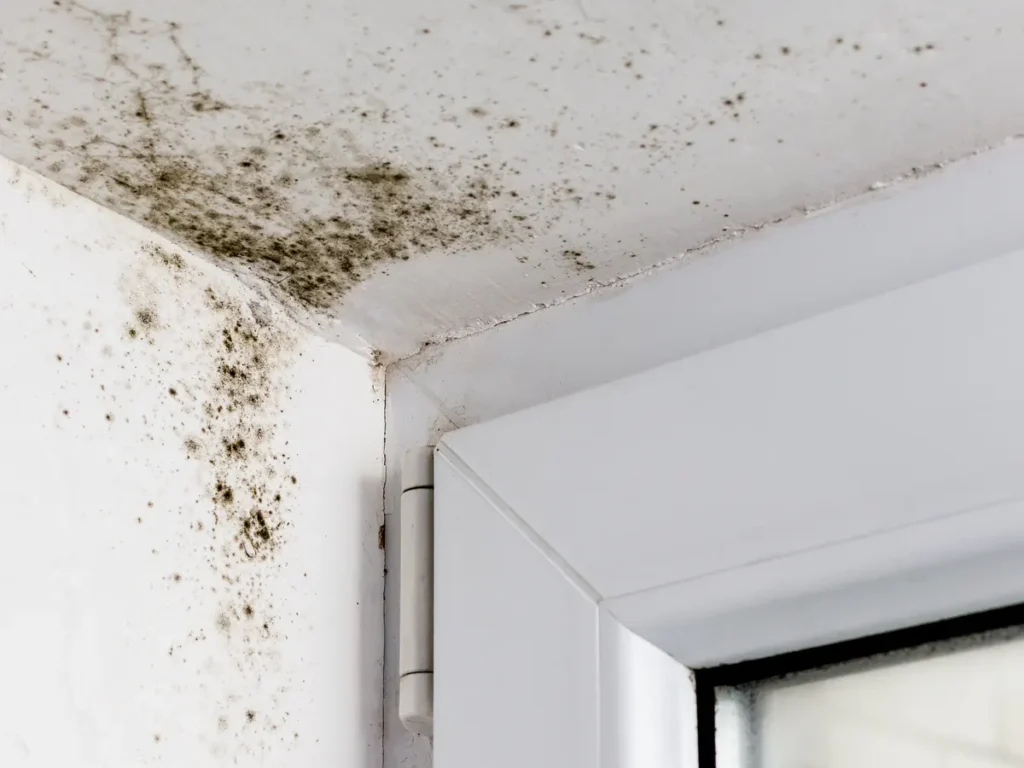Phone:
720-399-3335
Office address:
1685 S. Colorado Blvd. Suite 151, Denver, CO 80222

As we shine a light on the insidious presence of black mold, we uncover a realm of unseen dangers lurking within our living spaces. This toxic intruder can silently wreak havoc on our homes and health.
From its clandestine growth to the subtle signs it leaves behind, black mold demands our attention and vigilance.
Stay tuned as we unravel the mysteries surrounding this formidable foe and learn how to protect ourselves from its harmful effects.
Black mold, scientifically known as Stachybotrys chartarum, is a hazardous type of mold characterized by its greenish-black color and distinct odor. When present in homes, it can pose serious health risks. The danger of black mold lies in its mycotoxins, leading to health issues. Symptoms of black mold exposure include chronic headaches, rashes, coughing, sneezing, wheezing, and more. It’s crucial to differentiate black mold from mildew, as black mold appears as a black to dark brown slimy film in damp, dark places. Unlike mildew, black mold can produce mycotoxins that can lead to severe health issues. Recognizing what black mold looks like is essential for early detection and remediation.
Understanding the dangers associated with black mold exposure is vital, especially for individuals with weakened immune systems. Inhaling spores released by black mold can worsen asthma and cause allergic reactions. If left untreated, black mold exposure can lead to fatigue, persistent headaches, dizziness, and structural damage. Proper identification and prompt action are key in mitigating the risks associated with black mold in indoor environments.
Black mold thrives in areas with excessive moisture and poor ventilation. Water damage is a primary cause of black mold growth, providing the damp environment necessary for its development. Poor ventilation exacerbates the issue by allowing humidity levels to remain high, creating an ideal breeding ground for black mold.
Leaky roofs or plumbing problems can also lead to the accumulation of moisture, promoting black mold growth. In spaces like bathrooms and basements, where dampness and limited airflow are common, black mold can proliferate rapidly.
Mold spores can colonize surfaces within a day or two of exposure to moisture, quickly spreading and becoming visible within a week. Early detection is crucial to prevent extensive black mold growth, requiring professional for mold testing and effective removal.
Proper maintenance practices and adequate ventilation are essential in preventing black mold formation and ensuring a healthy living environment.

In appearance, black mold typically manifests as a greenish-black slimy film with a distinct odor in damp, poorly ventilated areas. It thrives in spaces with water damage and low airflow, often found in basements, bathrooms, or crawlspaces. Early signs of mold include musty smells and visible dark patches on walls or ceilings.
Individuals with weakened immune systems are more vulnerable to its effects, which can range from allergic reactions to severe respiratory issues. If black mold is suspected, it’s crucial to seek professional mold remediation to ensure safe and effective removal.
Prompt action and proper ventilation can help prevent its growth, protecting both the structural integrity of the property and the health of its occupants.
While black mold is known for its potential health hazards, harmless mold typically presents as a non-toxic variety of mold that may share similar visual characteristics with its more dangerous counterpart.
It’s crucial to differentiate between dangerous black mold and regular mold, especially in the early stages of mold growth in a house. Harmless black mold can appear as small spots or patches of mold on walls or ceilings, often resembling dark stains. These initial signs of mold growth may not always be accompanied by a musty odor, making it challenging to identify without a thorough professional inspection.
Call Now
You Can Call Us At This Number: 720-399-3335
As we examine the characteristics of black mold, one notable aspect to consider is its distinctive musty and earthy odor. The smell of black mold is often described as pungent, damp, and unpleasant.
If you notice a musty smell in areas prone to moisture or water damage, it’s essential to investigate further for potential signs of black mold. Swift action is necessary to prevent further growth and potential health risks.
Black mold can spread rapidly, becoming visible in as little as 3-7 days and covering several square feet within a week. When black mold begins to grow, it may manifest as a dark, slimy film on walls, indicating the presence of moisture and a conducive environment for mold development. At this early stage, individuals may not immediately notice significant symptoms of black mold exposure. However, as the mold proliferates, symptoms such as chronic headaches, coughing, sneezing, and skin rashes may start to become apparent.
The speed at which black mold spreads depends on various factors such as humidity levels, temperature, and the presence of moisture. In ideal conditions, mold spores can germinate within 24-48 hours on damp surfaces, leading to visible growth within a week. It’s crucial to address any signs of mold on walls promptly to prevent further spread and potential health risks associated with prolonged exposure to black mold.

In damp and poorly ventilated areas, black mold can thrive and spread rapidly, including on walls where it can grow at a concerning pace.
Signs of mold in the house, particularly in the bathroom and basement, indicate potential black mold presence. Identifying black mold through professional mold testing is crucial for timely treatment.
Prompt action is necessary, as black mold can cover several square feet within a week. Understanding its rapid growth rate underscores the importance of early detection and removal to maintain a healthy living environment.
When airborne, mold spores, including those of the black mold variety, can travel through the air and potentially cause health issues upon inhalation. Black mold spores are lightweight and can float in the air, allowing them to spread easily indoors.
When disturbed, such as during cleaning or renovation, these spores become airborne and can travel to different areas of a building. Once in the air, they may be inhaled, leading to potential health risks from exposure. In indoor environments with poor ventilation, these spores may linger longer, increasing the chances of inhalation and adverse health effects.
It’s essential to address any black mold infestations promptly to prevent the spread of spores through the air and minimize the risks associated with exposure. Proper containment measures and professional remediation are crucial in dealing with airborne black mold spores to safeguard the health of occupants and prevent further contamination.
Upon discovering black mold in your home, immediate action is necessary to effectively remove and eliminate the mold contamination. To get rid of black mold, start by addressing any water leaks or excess moisture sources to prevent further growth. Use a professional mold inspector to test the home to identify specific types of mold present and locations of higher concentration of mold spores. The report provided by the mold inspector will help to guide a mold remediation professional in their cleaning and repair.
To prevent black mold from returning, maintain low humidity levels below 50%, fix any water leaks promptly, and use mold inhibitors in susceptible areas. If experiencing symptoms of mold exposure such as coughing, wheezing, or skin irritation, seek medical attention. Consider professional mold remediation services to ensure safe and thorough removal. Remember, swift action and preventive measures are key to safeguarding your health and home from the harmful effects of black mold.
In conclusion, black mold is a dangerous fungus that thrives in damp, poorly ventilated spaces, posing serious health risks to individuals. It spreads quickly and can cause structural damage if left unchecked. Recognizing the signs of black mold, such as its distinct odor and greenish-black appearance, is crucial for early detection.
By taking proactive prevention measures, conducting regular inspections, and seeking professional testing and remediation, we can protect our homes and loved ones from this toxic intruder.
Call Now
You Can Call Us At This Number: 720-399-3335